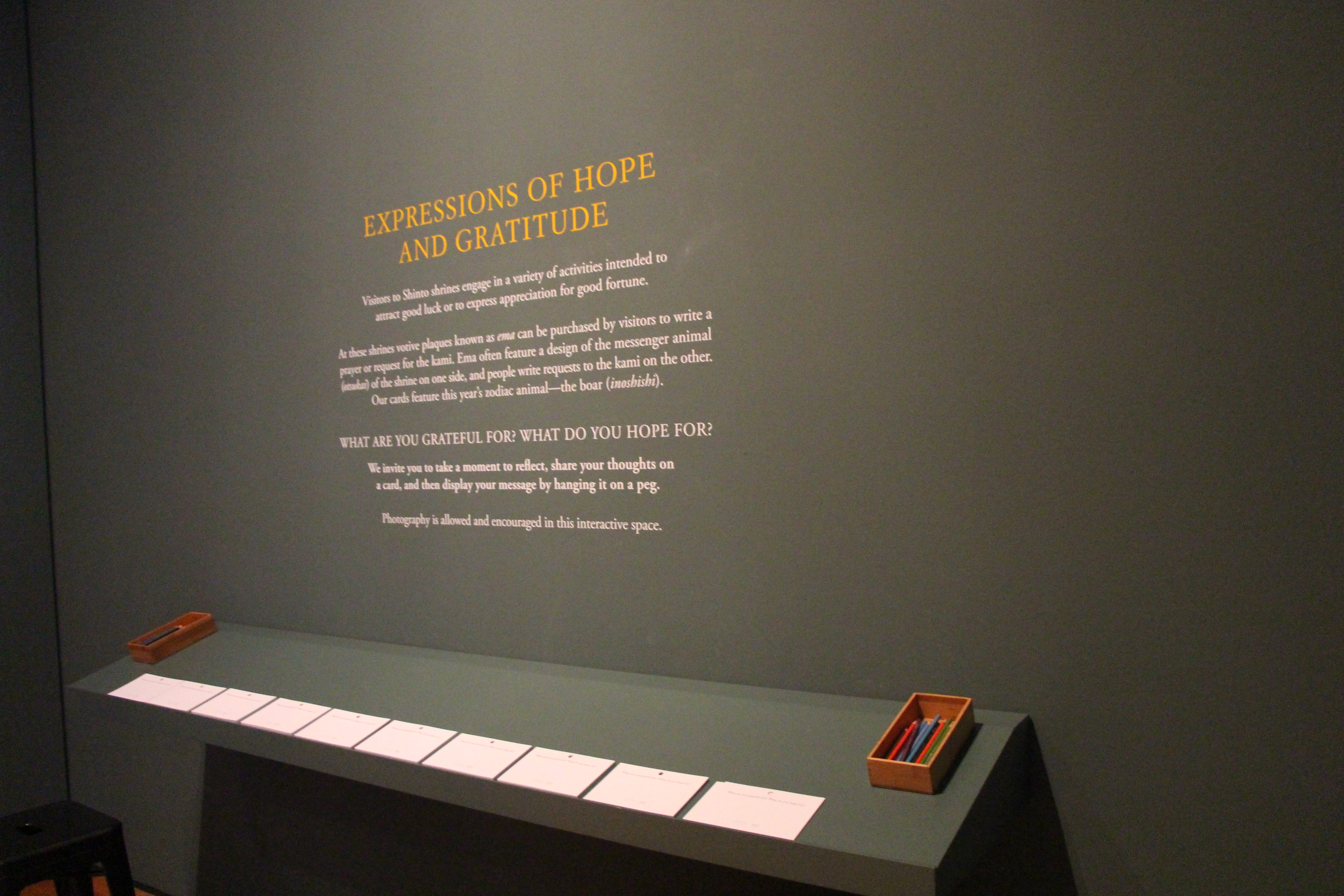Exploring Shinto Shrine Culture: The CMA Invites Visitors to Share an Abundance of Hope and Gratitude
- Blog Post
- Exhibitions

Kasuga Mandala Reliquary Shrine, 1479. Muromachi period (1392–1573). Lacquered wood with color; 55.6 x 39.7 x 48 cm. Tokyo National Museum. Photo: TNM Image Archives
An exhibition ten years in the making, Shinto: Discovery of the Divine in Japanese Art features celebrated Japanese artworks that relate to the Japanese belief system called Shinto. In the essay below, the CMA’s Associate Director of Interpretation Lori Wienke discusses the interpretive techniques that visitors can use to explore this exhibition, including large-scale shrine illustrations and activities in the exhibition.
Shinto: Discovery of the Divine in Japanese Art presents artworks from Japan’s unique belief system, called Shinto. Focused on the veneration of divine phenomena called kami, Shinto celebrates Japan’s relationship with the natural world alongside ancestor deities. Our task in shaping the interpretive content for this exhibition was to highlight the tradition of kami veneration and the fusion of kami and Buddhist deities in Japan.
In addition to understanding what kami are and how people interact with them through entertainment, celebration, and veneration, we also wanted to create an opportunity for visitors to appreciate the experience of visiting a shrine. When entering the last space in the exhibition, visitors are greeted by a large-scale illustration of the physical structures and spaces within a shrine, allowing visitors to understand the scope and complexity of a shrine’s physical space.

It was also important to explore the activities that take place at a shrine. A large-scale detail of the screen Mandala of Kumano Shrine at Nachi shows a shrine bustling with activity. This juxtaposition of the illustrated plan and shrine details provides a conceptual framework through which visitors can understand a shrine visit.


Various activities at shrines offer opportunities for visitor participation. From wish fulfillment to fortunes, shrine visitors engage in a variety of activities intended to attract good luck or to express appreciation for good fortune. One of these is the dedication of ema, or votive plaques that can be purchased by visitors to write a prayer or request for the kami or divine beings. In order to touch upon that experience, we conceived an activity that would engage visitors in a reflective moment that offered an opportunity to share their thoughts on hope and gratitude.


Giving visitors a chance to share their voice is a fundamentally important part of our interpretive approach. The objects in the exhibition and the labels that speak to them offer a mostly passive experience for visitors. Providing an opportunity for active engagement not only enlivens the space, it also recognizes the significance of what each visitor brings to the exhibition — a personal lens through which content is understood.
Ema often feature an image of the shrine’s messenger animal on one side, and people write requests to the kami on the other side. For our response cards, we chose to feature this year’s zodiac animal — the boar. Our adorable boars — one hairy and one with spots — were created by our graphic designer Natalie Maitland to accompany the reflection prompts: What are you grateful for? and What do you hope for? These response cards are hung on pegs to display and share with others. Andrew Gutierrez, associate director of Design and Architecture, drew visual inspiration from shrine architecture to design our amazing Shinto shrine-inspired display.



We hoped visitors would be inspired by this activity to share their thoughts or feelings — and the response has been amazing. As of mid-May, a few weeks after opening the exhibition, we’ve had more than 3,500 visitors participate and share their responses. We’ve received cards with written responses, drawings, and even a 3D landscape! It’s evident that our visitors are embracing this opportunity to share positive commentary on their lives, communities, and the world.
“ I’ve been excited to see the diversity of responses, which are personal, timely, relevant, and reflective of the universality of the human experience. In this challenging moment in time, it is gratifying to see an abundance of hope and gratitude at the CMA.” — Lori Wienke, Associate Director of Interpretation
It’s very rewarding to see an idea come to fruition that really resonates with our visitors. Our intention was to create an opportunity for visitors to personally connect with the exhibition content, understand the experience of visiting a shrine, and share their perspectives on hope and gratitude. I’ve been excited to see the diversity of responses, which are personal, timely, relevant, and reflective of the universality of the human experience. In this challenging moment in time, it is gratifying to see an abundance of hope and gratitude at the CMA.